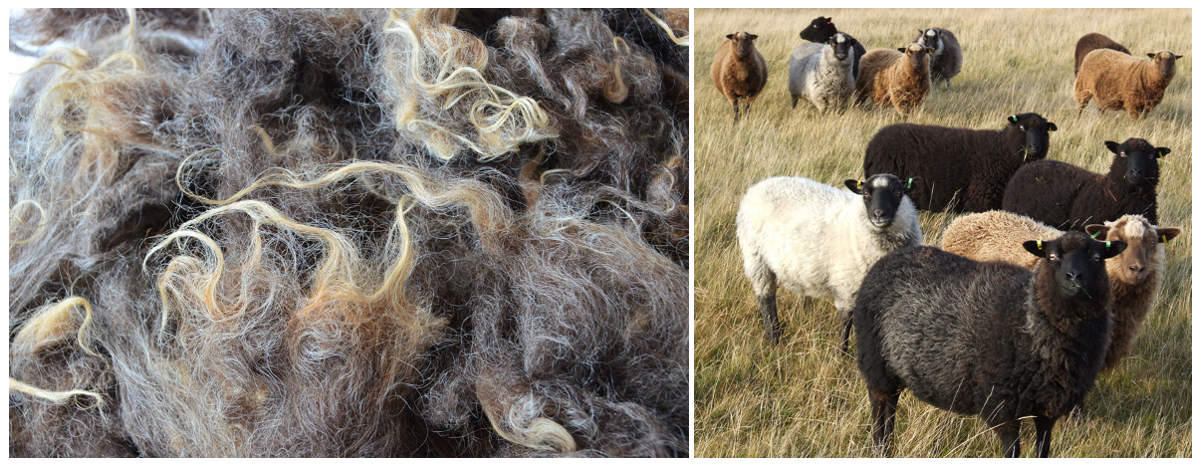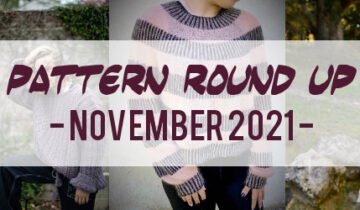Many elements should be taken into account when assessing the quality of a yarn and the most important of all is of course the fleece it is made from. Fleece – or wool – varies from one breed of sheep to another, carrying specific structural elements that impact the softness, strength and drape of the yarn. Knowing about the fleece produced by different breeds of sheep is a good way to understand what to look for when buying wool for a new project. Depending on the effect you want to achieve you might favour certain wool over some others.
In this fourth episode of Know Your Sheep we’re going to look at the world famous Shetland sheep.
1. History
Archaeological remains suggest that 4500 years ago, Neolithic farmers were already breeding sheep of the Soay type in the Shetlands. Some Shetland sheep today show similar markings to those seen on Soays and Mouflons, testifying a genetic tie between Shetlands and those ancient breeds. Through the centuries those Soay type sheep have been subject to multiple cross-breeding. When Norwegians settled in the Northern Isles in 500 AD, they’ve presumably introduced some Scandinavian breeds such Spaelsaus and Vilsaus and crossed them with local sheep. Northern European breeds were all short tailed, small framed, very hardy and agile. Those qualities proved to be profitable to early farmers as their livestock were able to survive in harsh climate and graze on rough vegetation. Gradually Roman breeds were introduced all over Europe leading to the improvement of some lines of Northern European sheep. In remote locations like the Shetlands, short-tailed sheep kept evolving into distinct breeds.
In the early 1700s Shetlands fleece was used to produce high quality hand knitted stockings that were traded in Holland and the UK. In 1786 local flocks were devastated by an epidemic of crabs while simultaneously new meat breeds with coarser wool were introduced in the Northern Isles. Sheep farming was now mainly motivated by the production of meat to the detriment of the quality of the wool. Despite those threats Shetland farmers kept selecting animals with fine and soft fleece, protecting in this way the local knitting and lace industry.

At the turn to the 20th century the making of lace was slowly replaced by the production of hand-knitted garments. Jumpers and accessories with intricate stranded motifs flourished. To fight against the threats of the meat industry and promote the production of high quality wool, the Shetland Flock Book Society was founded in 1927. Members of the Society established a breed description that is still in use today. Shetlands now have to be selected to produce a fine-woollen single-coated fleece, characteristic of the breed as we know it today. Since the 1970s UK farmers wanting to register their flocks also have to include these standards in their breeding scheme. For decades, Shetland sheep was considered to be an endangered breed but is now widely spread across the UK mainland and the Northern Isles. In 2011, 2244 animals were registered by 196 farmers.

2. The Wool.
Shetland sheep classify as a down-type breed. Down-wools have well defined spiral crimps which give a lot of elasticity to the fleece and extra crush resistance to woven fabrics. Due to their short staple length, down-wools are usually woollen spun, resulting in an light, airy and round yarn. The fleece doesn’t show any lustre and can also be described as chalky. Shetlands have the finest wool amongst the British breeds and bear the light and airy handle characteristic of the down-wools. Today it is commonly used to produce Fair-isle knitwear, woven tweed and yarns ranging from fine hand-spun lace weight to yarns designed to hand-knit Fair-Isle garments.
Markings on Shetland sheep can widely vary from one animal to another. Their fleeces comes in 11 natural colours and there are today 30 different markings recognised by the Shetland Flock Book Society. Fleeces of different colours can be spun together to obtain a wide range of naturally coloured yarns which will retain most of the softness that can be lost through industrial dyeing.
Pure bred Shetlands tend to shed their fleece around spring, a trait they’ve inherited from their ancestor the Soay sheep. So instead of being shorn, Shetland sheep can be rooed by hand. Rooing stops there being harsh cut ends in the fleece, resulting in a wool that is especially soft.

3. The Sheep.
Shetlands are small, finely boned and very agile. Ewes only weigh between 35 and 50 kg while rams weigh between 45 and 60 kg, making of Shetland sheep one of the smallest breed. Their face features a prominent nose, a small mouth and medium size ears erected slightly above the horizontal. The head itself has a good width in between the ears and tapers rapidly toward the nose. Rams have spiral horns while most ewes are polled. Their tail is short and fluked shaped. The size of the tail varies depending on the size of the sheep but should not exceed 6 inches. The colour of the skin depends on the colour of the wool and the marking.

4. Yarns and books.
As we explained earlier, yarns spun from Shetland fleece are round, bouncy, light and airy. Once knitted they create a fabric that holds itself nicely and doesn’t drape much. As Shetland yarns are predominantly used to knit Fair-Isle items, most of them are available in small balls of either 25 or 50 g, making it easier to combine lots of different colours in one single project.
Jamieson and Smith – 2ply Jumper is one of the most popular yarns to knit Fair-Isle patterns. Although Shetland wool is meant to be very fine and soft, the 2 ply Jumper weight is actually a sturdy and hard-wearing yarn, ideal to create long-lasting knits. It worth noticing that it softens quite a bit after blocking, and can be worn next to the skin without being itchy. Despite its name, the 2ply Jumper is in fact a fingering weight yarn. Fair-Isle jumpers and cardigans were traditionally knitted with this weight and so that’s why it has been called a Jumper Weight – 2 ply only refers to the number of strands it is spun with.
Wool Journey: Shetlands by Amber Corcoran and Jaime Jennings and Colours of Shetlands by Kate Davies, are two great publications that celebrate both the Shetland Islands and their unique wool industry. Jaime Jennings also recently published a series of articles in which she talks about her last holiday there.
Until Next Time… Happy Knitting!
SOURCES:
Fournier, Nola and Fournier, Jane, In Sheep’s Clothing: A Handspinner’s Guide to Wool, Loveland: Interweave Press LLC, 1995. Print.
History of the Breed, The Shetland Sheep Society: Caring for Shetland Sheep Outside the Shetland Islands, Web. http://shetland-sheep.org.uk/page.php?Plv=2&P1=6&P2=1&P3=
The Breed, The Shetland Sheep Society: Caring for Shetland Sheep Outside the Shetland Islands, Web. http://shetland-sheep.org.uk/page.php?Plv=1&P1=6&P2=&P3=
Shetland Wool, The Shetland Sheep Society: Caring for Shetland Sheep Outside the Shetland Islands, Web. http://shetland-sheep.org.uk/page.php?Plv=2&P1=6&P2=3&P3=
Raising Shetland Sheep: Guide to Starting A Flock, One Acre Farm, Web. http://ouroneacrefarm.com/raising-shetland-sheep-guide-to-starting-a-flock/
The Breed, Roseblank Shetland Sheep, web. http://www.rosebank-shetland-sheep.co.uk/the-breed.php





 No products in the basket.
No products in the basket.